

Humans have tipped the Earth into a new chapter of geological history and it started in around 1950, scientists claim.
It is the latest date considered for the beginning of the Anthropocene epoch – a time in which humans permanently changed the planet with the widespread use of concrete, aluminium, plastic and nuclear weapons, as well as the burning of coal and gas.
Now geoscientists have gathered ‘overwhelming evidence’ for the proposed epoch, when they say humans didn’t just leave traces of their actions, but began to alter the whole Earth system.
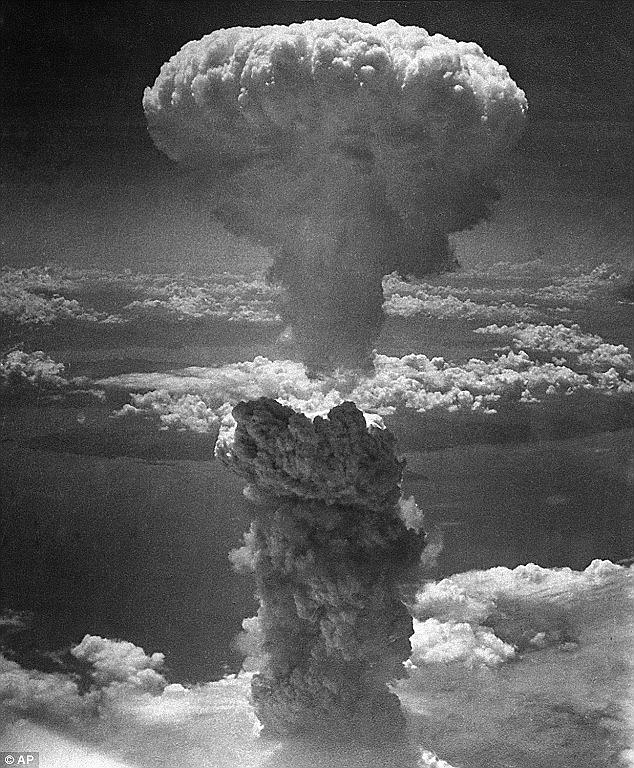
Humans have tipped the Earth into a new chapter of geological history and it started in around 1950, scientists claim. Now geoscientists have gathered ‘overwhelming evidence’ for the proposed epoch, wehn humans began to alter the whole Earth system, with nuclear weapons (pictured) for example.
For the last 11,700 years, the stable Holocene Epoch allowed the human civilisation to develop.
It was a time during which human societies advanced by gradually shaping the land to increase food production, built urban settlements and became proficient at using water, mineral and energy resources of the planet.
But the proposed beginning of the Anthropocene Epoch was a time of rapid environmental change caused by a population explosion, rapid industrialisation and consumerism during the ‘Great Acceleration’ of the mid-20th century, experts argue.
Until now the Anthropocene as a period distinct from the previous Holocene epoch has been an idea used to demonstrate the massive impact that humans have had on the planet’s atmosphere and species.
But a new review, published in the journal Science, has found human activity has left a pervasive and persistent signature on Earth that warrants recognition as a new geological time unit.
It says mankind’s actions are recorded as measurable signals in geological strata such as sediments and ice.

the proposed Anthropocene Epoch was a time of rapid environmental change caused by a population explosion, rapid industrialisation and consumerism during the ‘Great Acceleration’ of the mid-20th century, experts argue. One of the defining characteristics is the use of plastic (waste shown above).
These also include the build-up of high levels of nitrogen and phosphorus from fertilisers and pesticides, coastal sediments and the extinction of species.
Dr Colin Waters of the British Geological Survey said: ‘Humans have long affected the environment, but recently there has been a rapid global spread of novel materials including aluminium, concrete and plastics, which are leaving their mark in sediments.
‘Fossil-fuel combustion has dispersed fly ash particles worldwide, pretty well coincident with the peak distribution of the “bomb spike” of radionuclides generated by atmospheric testing of nuclear weapons.’
Professor Jan Zalasiewicz of the University of Leicester, chair of the 24 member Anthropocene Working Group tasked with deciding the date for the epoch added: ‘All of this shows that there is an underlying reality to the Anthropocene concept.
‘Not only would this represent the first instance of a new epoch having been witnessed first-hand by advanced human societies, it would be one stemming from the consequences of their own doing.’
The starting date for the Anthropocene is still under review by the working group and suggestions of when it began have varied widely, from the 18th century when the Industrial Revolution began, to around 300 years later.
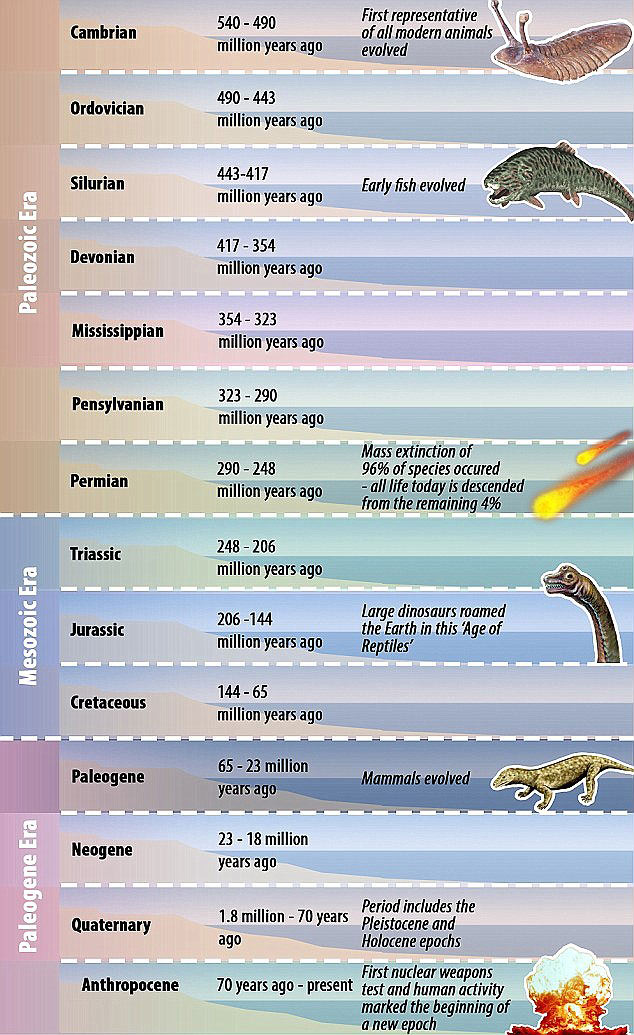
The new geological epoch (shown at the bottom of this diagram) - the name of which means the human epoch - was proposed by Nobel Prize-winning atmospheric chemist Paul Crutzen just 15 years ago, and since then the idea has caught on.
Last year the working group suggested the date of the first atomic bomb test in July 16, 1945 should be the beginning of the Anthropocene.
The proposal was signed by 26 members of the group, created by the body that oversees changes to the geological timeline.
The beginning of the nuclear age marks the historic turning point when humans first accessed an enormous new energy source - and is also a time level that can be effectively tracked within geological strata – layers of rocks and soil.
Speaking this time last year, Dr Zalasiewicz said: ‘Like any geological boundary, it is not a perfect marker – levels of global radiation really rose in the early 1950s, as salvoes of bomb tests took place.
‘But it may be the optimal way to resolve the multiple lines of evidence on human-driven planetary change. Time - and much more discussion - will tell.’
Previous ‘divisions’ between geological eras have been marked by 'spikes' in the geological records, caused by global catastrophes such as the asteroid strike thought to be responsible for wiping out the dinosaurs, or a wave of volcanic eruptions.
Day|Week

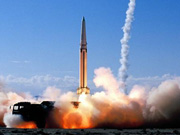 Spectacular rockets launch scenes
Spectacular rockets launch scenes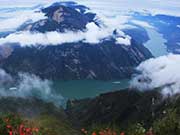 Spectacular aerial photos of the Three Gorges
Spectacular aerial photos of the Three Gorges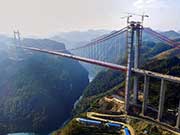 Admit it! That is a High-way built by China
Admit it! That is a High-way built by China Photos of Beijing Film Academy student hit the Internet
Photos of Beijing Film Academy student hit the Internet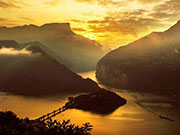 Spectacular aerial photos of the Three Gorges
Spectacular aerial photos of the Three Gorges New balls please! Polish sports stars strip off for risqué calendar
New balls please! Polish sports stars strip off for risqué calendar A glance at life of Ukrainian models working in Chongqing
A glance at life of Ukrainian models working in Chongqing Contestants of Mrs. Globe pose for photo in Shenzhen
Contestants of Mrs. Globe pose for photo in Shenzhen
 Bikini models attend hot pot banquet in Hefei
Bikini models attend hot pot banquet in Hefei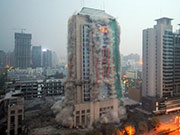 118-meter-high Never-used Building in NW. China Demolished
118-meter-high Never-used Building in NW. China Demolished